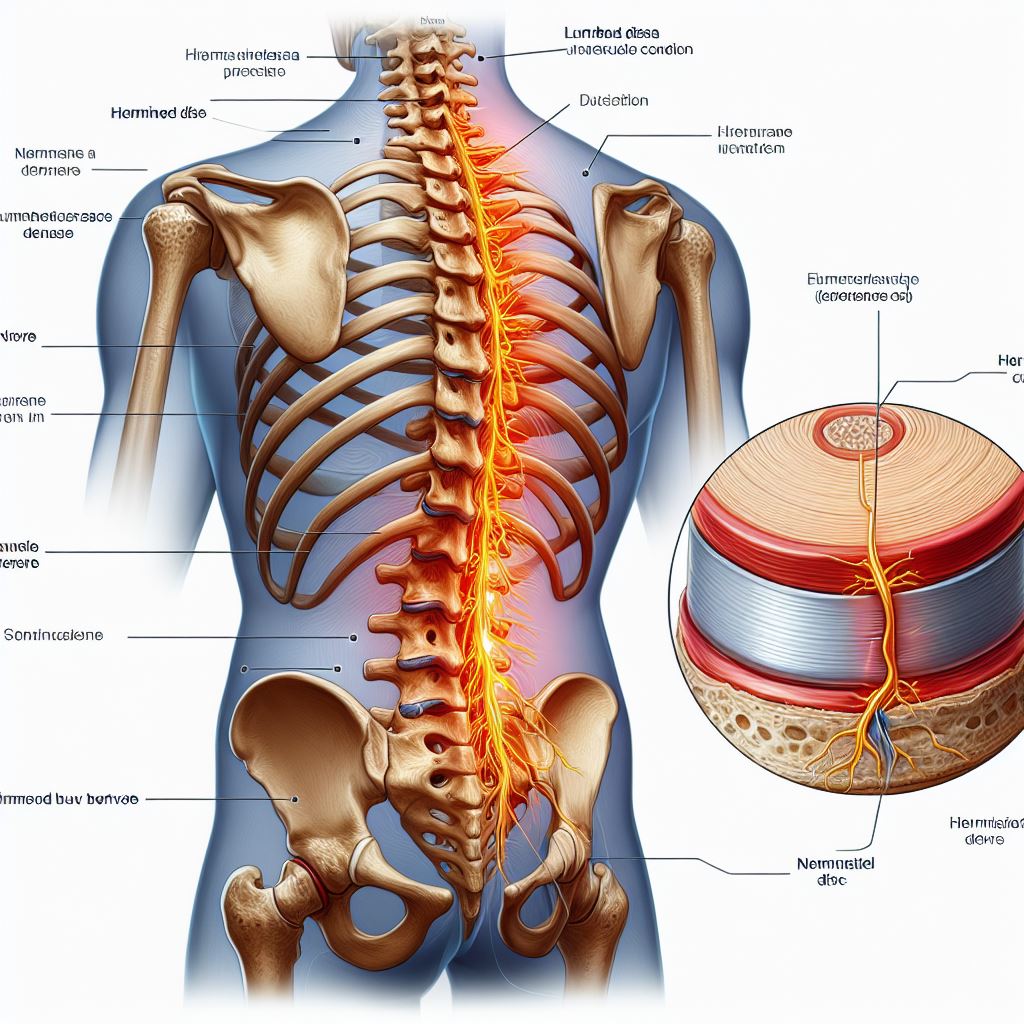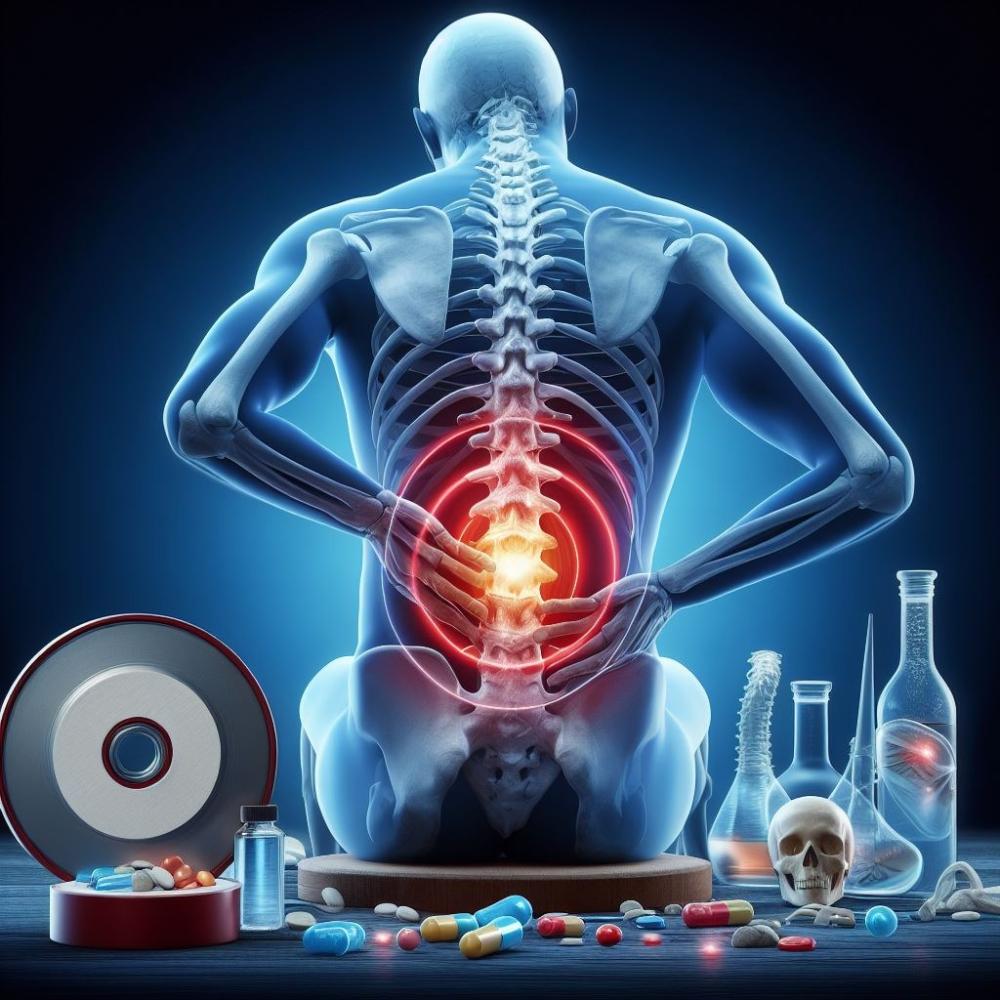The adult spine consists of 24 bones called vertebrae. Some vertebrae are lined with soft discs made of a jelly-like substance. These discs allow you to move your spine and bend.
But if a disc between two vertebrae begins to slip out of place, it can irritate the surrounding nerves and cause severe pain. The condition is called a slipped, ruptured or herniated disc.
Signs of a herniated disc
One sign may be where the pain is located. Although herniated discs can occur in any part of the spine, they are most common in the lower part of the spine (lumbar spine), just above the hips. The pain may spread from your back to your buttocks, thighs, and even your calves.
Discomfort from a herniated disc usually gets worse when you are active and lessens when you rest. Even coughing, sneezing, and sitting can worsen your symptoms because they put pressure on compressed nerves. A herniated disc can also give you tingling or numbness. You may also feel weakness in the affected part of your back.
Age also plays a role. As you get older, your discs tend to break down and lose their cushion. This makes a herniated disc more likely.
Diagnosis of a herniated disc
The best way to find out if you have a herniated disc is to see your doctor. They will likely perform a physical examination to find the source of your pain. This is usually the only test you will need to confirm the diagnosis. Your doctor will check your back for sore or painful spots. They may ask you to lie on your back and raise or move your legs in certain ways. If you feel pain, it is likely a herniated disc.
They can also check:
- Your reflexes at the knee and ankle
- Your leg strength
- How to walk on your heels and toes
- Whether you feel light touches or vibrations
- If your doctor wants to rule out other sources of your pain, or identify specific nerves that are aggravated, he or she may perform further tests, including:

X ray. Although standard X-rays can't show whether you have a herniated disc, they can show a doctor the outline of your spine and rule out whether your pain is caused by something else, such as a fracture or tumor.
Myelography. This test uses a dye injected into the cerebrospinal fluid and X-rays to determine pressure on the spinal cord.
CT scan. A computed tomography (or CAT) scan takes several X-rays from different angles and combines them to create images of the spinal cord and surrounding structures.
Magnetic resonance imaging. An MRI uses radio waves, a magnetic field, and a computer to create detailed 3D images of the spinal cord and surrounding areas. MRI images can locate the herniated disc, look inside it and identify the affected nerves.
Electromyogram (EMG). Your doctor may use these tests to see if there are any damaged or compressed nerves. An EMG test uses a device to detect the tiny amount of electricity produced by muscle cells when they are stimulated by nerves connected to them. A needle electrode placed in the muscle records its electrical activity and looks for anything that is not as it should be.
Nerve conduction studies (NCS) are often performed at the same time as an EMG. In this test, nerves are stimulated with small electrical pulses by an electrode at one point on the body while other electrodes detect impulses at a different point. The time it takes for electrical impulses to travel between the electrodes lets your doctor know if there is nerve damage.
What are the treatments for a herniated disc?
If you have a “slipped” disc, it should continue to function as normally as possible. This may not be possible at first if the pain is severe. However, get moving as quickly as possible and return to normal activities as soon as possible. As a general rule, don't do anything that causes a lot of pain. However, you will have to accept some discomfort when you are trying to stay active, but this is not harmful. It may be a good idea to set a new goal each day – for example, walk around the house one day, walk to the shops the next, etc.
In the past, the advice was to rest until the pain subsided. It is now known that this was a mistake. You'll likely recover more quickly and be less likely to develop persistent (chronic) back pain if you stay active when you have back pain rather than resting too much. Also, you can naturally sleep in the most comfortable position on whatever surface is the most comfortable. (Advice given in the past has been to sleep on a firm mattress, however, there is no evidence to suggest that a firm mattress is better than any other type of mattress for people with back pain.
Exercise
General exercises are very important if you have CD. It can help relieve pain by strengthening the muscles that support your spine. Although it is not known whether specific spinal exercises are better than keeping you fit in general, a physical therapist can advise you on exercises you can do in your condition.
Not only does exercise reduce the pain of a prolapsed disc, but it may also reduce the chance of it happening again.

